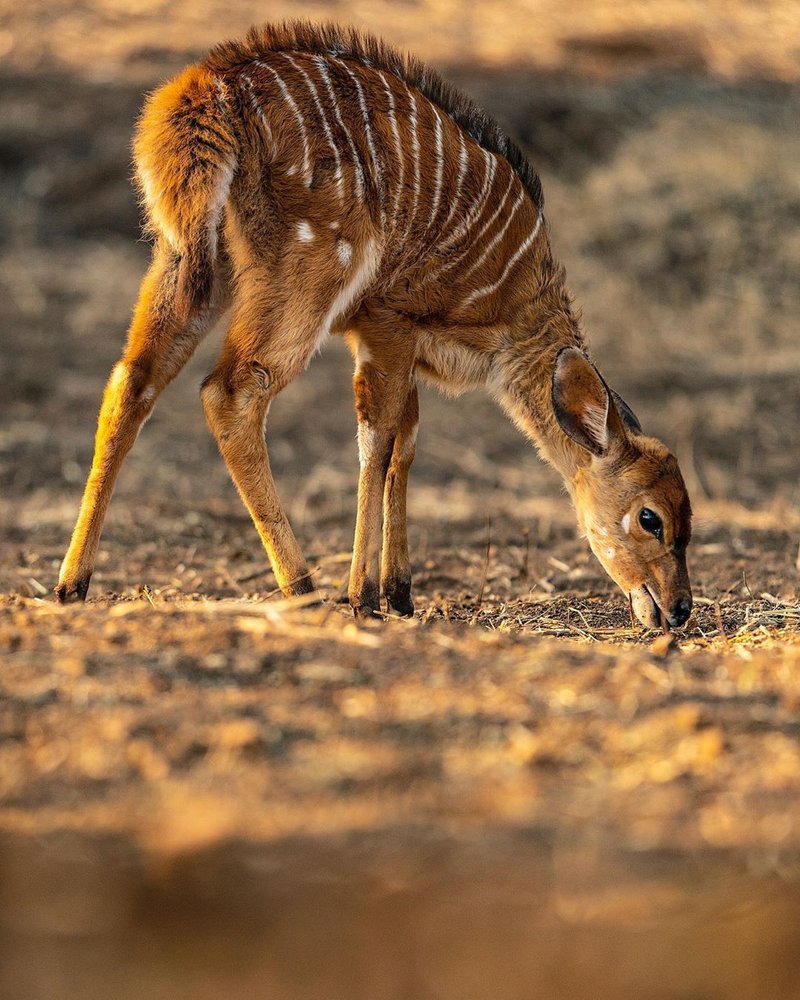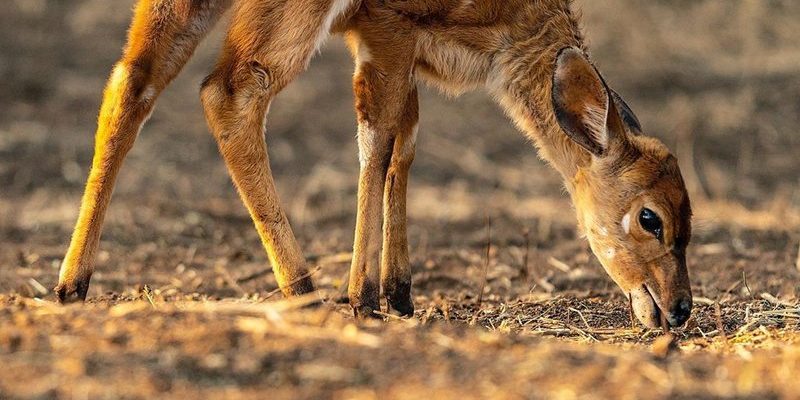
You might be wondering why this particular antelope matters so much. Well, it’s not just about aesthetics. The Nyala contributes to food chains, seed dispersal, and even the health of the vegetation it grazes on. So, let’s dive into the fascinating world of the Nyala and uncover how it fits into its habitat like a piece of a puzzle.
What Is a Nyala?
Before diving into the Nyala’s role in the ecosystem, it’s helpful to understand what this animal is all about. The Nyala (*Tragelaphus angasii*) is a medium-sized antelope that can be found in a variety of habitats, mainly in woodlands and dense brush. Males are known for their impressive spiral horns that can grow up to 36 inches long, while females are smaller and lack horns entirely.
These antelopes are generally social creatures, often seen in small herds. They are shy and elusive, spending much of their time in the cover of thick bushes. Their diet mainly consists of leaves, shoots, and fruits, making them browsers rather than grazers. This helps them thrive in their natural environment, which is often filled with a variety of vegetation.
You might think of them as nature’s gardeners, carefully selecting which plants to munch on, and indirectly shaping the landscape around them.
The Nyala and Food Chains
One of the most important roles the Nyala plays in its ecosystem is that of a herbivore. As part of the food chain, these antelopes serve as a crucial food source for larger predators, such as lions and leopards. Here’s how this works: the Nyala grazes on various plants, helping to keep their populations in check. This, in turn, ensures that no single plant species dominates the area.
But it goes both ways. Without animals like the Nyala, the balance would tip. Overpopulation of certain plants could lead to habitat destruction and a decrease in biodiversity, which is essential for a thriving ecosystem. So, by simply existing and fulfilling its role as a food source, the Nyala supports a rich and diverse tapestry of life.
Seed Dispersal and Plant Health
Here’s the thing: while the Nyala munches on leaves and fruits, they also play an unexpected role in seed dispersal. When they eat fruits, they often pass the seeds through their digestive systems and later excrete them in different locations. This process helps to spread plants across a wider area, promoting diversity and growth in various regions.
For instance, trees like the marula rely on animals like the Nyala to help them reproduce. The seeds need to pass through the Nyala’s digestive system to germinate effectively. So, in a way, the Nyala becomes a tree’s best friend by helping it thrive.
Healthy vegetation is key for many species in the ecosystem. When plants flourish, they provide food and shelter for other animals, creating a domino effect.
Impact on Habitat Structure
Did you know that the Nyala influences the structure of its habitat? By feeding on certain plants, they help prevent overgrowth and encourage the growth of a variety of species instead of just a few dominant ones. This promotes a healthier ecosystem, where different animals can thrive.
This browsing behavior can lead to a phenomenon called grazing pressure, where the right amount of plant consumption helps plants to develop stronger root systems and better resilience to diseases or pests. In other words, the Nyala helps maintain the health of the vegetation around them, ensuring it can recover and continue to flourish.
Imagine the Nyala as a gardener, pruning the plants just enough to allow new growth while keeping the whole garden vibrant and diverse.
Competition and Social Structure
The Nyala’s interactions with other herbivores also highlight its role in the ecosystem. While they primarily feed in areas with abundant foliage, there are times when they compete for resources with other herbivores, like elephants or impalas. This competition is a natural part of the ecosystem, prompting different species to adapt their feeding habits and behavior.
Interestingly, Nyala herds often exhibit a social structure that helps reduce competition within the group. Females and young males often stay together, while dominant males maintain their territory. This hierarchy ensures that resources are shared, preventing over-exploitation of any one area.
By structuring their social lives in this way, the Nyala helps maintain a balanced ecosystem, allowing for coexistence with other herbivores.
Conservation and Human Impact
With all these vital roles in its ecosystem, it’s crucial to talk about conservation efforts surrounding the Nyala. Habitat destruction, hunting, and climate change threaten their populations. When the Nyala’s numbers dwindle, the entire ecosystem can suffer, too.
Organizations focused on wildlife conservation are dedicated to protecting the Nyala and its habitat. They work to create protected areas, raise awareness, and promote sustainable practices among local communities. These efforts are essential to ensure that the Nyala continues to thrive in its natural environment.
You can help by supporting local conservation groups or visiting protected areas where these antelopes live, boosting ecotourism and promoting awareness about their plight.
In summary, the Nyala isn’t just a beautiful animal roaming the woodlands of Southern Africa. It plays numerous crucial roles in its ecosystem, from being a food source for predators to aiding in seed dispersal and maintaining balanced vegetation. The delicate interplay between their grazing and the health of their habitat is a reminder of how interconnected life is.
If you ever find yourself in a place where Nyala roam, take a moment to appreciate not just their beauty, but also their significance in the grand tapestry of nature. By understanding and protecting these fascinating creatures, we can help maintain the balance of the ecosystems they inhabit. Together, we can stand as stewards of the environment, ensuring that the Nyala and its role in the ecosystem continue for generations to come.

